Red Elderberry, Red Elder, Rocky Mountain Elder, Scarlet Elderberry - Sambucus racemosa
|
Sambucus racemosa - Red Elderberry, Red Elder, Rocky Mountain Elder, Scarlet Elderberry. Sambucus racemosa is a shrub (occasionally a small tree) in a genus of small trees and shrubs. The number of species in the genus is subject to some disagreement among experts - ranging from about 9 to about 20 - with some botanists classifying as varieties or subspecies the plants that others classify as species. The species presented here, Sambucus racemosa, has 6 to 12 varieties and subspecies, depending on which authority you follow. While there are several other varieties in northwestern North America, the variety found in the east where this specimen was photographed is var. pubens. Sambucus has relatively recently (around the turn of the 21st century) been moved from Caprifoliaceae into the Adoxaceae family, along with the closely related Viburnum genus.
Sambucus racemosa is known as Red Elderberry due to the color of the berries, which are reported to be somewhat poisonous. It is a more northern species than the other members of Sambucus found in North America, in its southern ranges found more in the mountains than in lower elevations, and is normally associated with rocky areas.
Found in:
AK, AZ, CA, CO, CT, GA, IA, ID, IL, IN, KY, MA, MD, ME, MI, MN, MO, MT, NC, ND, NH, NJ, NM, NV, NY, OH, OR, PA, RI, SD, TN, UT, VA, VT, WA, WI, WV, WY
Leave comments on Sambucus racemosa at this link. | 
Distribution of Sambucus racemosa in the United States and Canada:
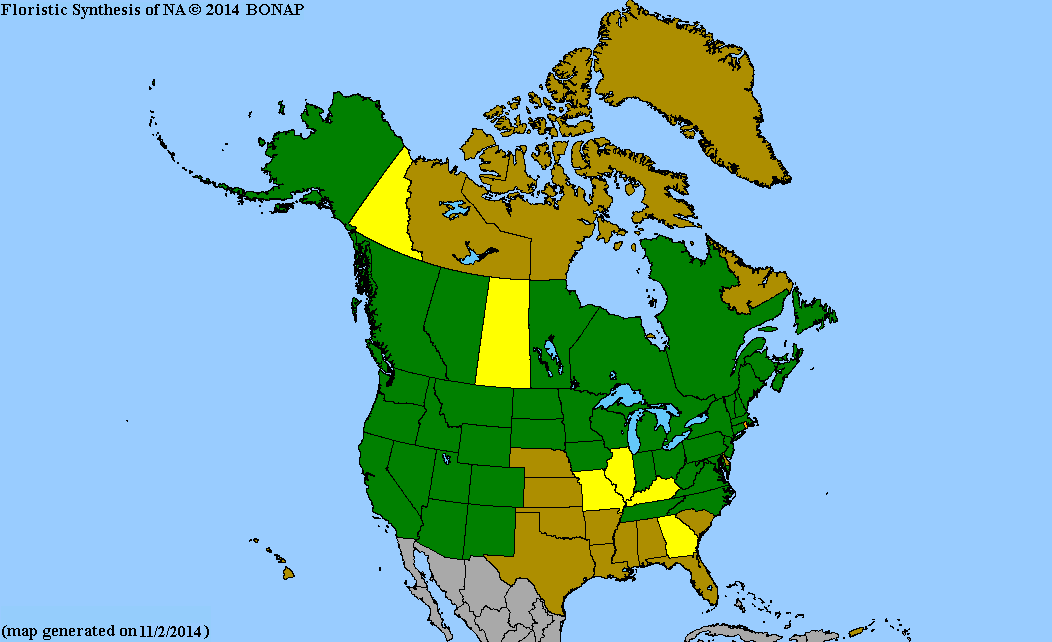
Map courtesy of The Biota of North America Program.
Map color key
Search Our Database: Enter any portion of the Scientific, Common Name, or both.
Do a general Google search of the entire site:
#ad
 Follow USWildflowers on Twitter
#ad
| | Site: GSMNP, Chestnut Top Trail, Blount County, TN Date: 2016-March-21 | Photographer: Gerald C. Williamson
Nikon D7000
Tamron SP 90MM f/2.8 AF Macro | | While the inflorescence of the more common Elderberry species - Sambucus nigra, Sambucus canadensis, or Sambucus cerulea, depending on which classification you follow - is a flat-topped, cyme-like structure - usually much wider than tall - the inflorescence of Sambucus racemosa is a panicle (a type of raceme), being longer than wide. The flowers are white; the flower buds may be pink. | | 
| | Site: GSMNP, Chestnut Top Trail, Blount County, TN Date: 2016-March-21 | Photographer: Gerald C Williamson
Nikon D7000
Tamron SP 90MM f/2.8 AF Macro | | The flowers of Elderberry (Sambucus) have 5 white corolla lobes (petals), but this photo (and the other photos on this page) was taken after they were drying up and dropping off - a few of the now-brown petals can still be seen here. Another anomaly that seems to be shown on the inflorescence pictures of this specimen - one which has me somewhat doubting my identification - is that many of the flowers seem to have 6 stamens rather than 5. The 3 small stigmata match descriptions of the plant, however. | | Click on the photo for a larger image
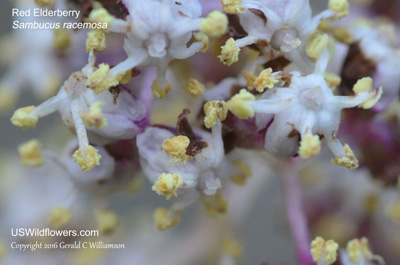
| | Site: GSMNP, Chestnut Top Trail, Blount County, TN Date: 2016-March-21 | Photographer: Gerald C Williamson
Nikon D7000 | | Red Elderberry leaves are pinnately compound with 5 to 7 oblong to lanceolate leaflets. | | Click on the photo for a larger image
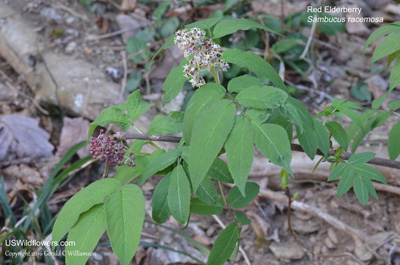
| | Site: GSMNP, Chestnut Top Trail, Blount County, TN Date: 2016-March-21 | Photographer: Gerald C Williamson
Nikon D7000
Tamron SP 90MM f/2.8 AF Macro | | The margins of the leaflets of Red Elderberry are serrated. | | Click on the photo for a larger image
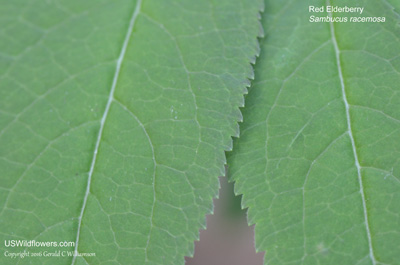
| | Site: GSMNP, Chestnut Top Trail, Blount County, TN Date: 2016-March-21 | Photographer: Gerald C Williamson
Nikon D7000 | | The 2nd-year and older growth of the stems of this shrub are brown while new stems are green or reddish green. I believe the "warts" on the surface are lenticels - basically holes in the bark through which gas exchange takes place (is this the plant "breathing"?) | | Click on the photo for a larger image
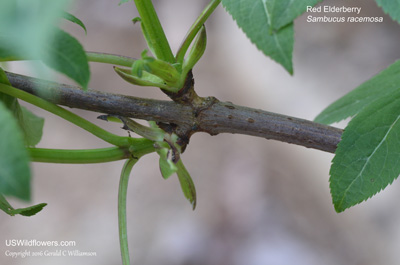
|
References used for identification and information:
|
|
| |
| #ad
|
|







